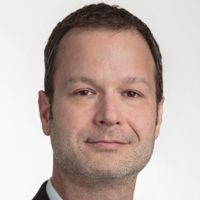Michigan and Minnesota are catching on and the solar power movement is now gaining a foothold in the Midwest. It’s happening in a variety of ways. From large -scale solar to community-based solar gardens and the growing popularity of household and business-owned solar installations, solar is a cost-effective option for meeting energy demand and an increasingly important part of any energy provider’s diversified portfolio of resources.
One large solar project after another in Michigan
The announcements can’t seem to come fast enough in Michigan as utilities, universities, and private businesses are racing to see who can establish themselves as the owner of Michigan’s largest solar array. DTE Energy—the state’s second-largest utility—currently operates the state’s largest solar array—a 1.1-megawatt (MW) system in Ann Arbor.

Michigan State University is taking advantage of parking lot space for its solar installation. Photo: Wikimedia Commons
But this distinction won’t last long. The Michigan State University Board of Trustees has approved construction of a 10 MW solar array spread over five of the campus’s parking lots. This commitment is a big first step toward the university’s commitment to cut coal from its energy portfolio and fulfill its obligations under the American Campuses Act on Climate Change pledge that it signed last week.
But wait! There’s more. The Lansing Board of Water and Light (BWL) is moving forward with a 20 MW solar system to be located in Delta Township. The project will generate enough energy to power more than 3,500 homes and is expected to create more than 150 temporary full-time construction jobs during its construction.
This announcement comes only weeks after BWL announced plans for two community solar projects, totaling 0.6 MW to be located on brownfield sites in its territory. These projects allow customers to lease individual panels within the solar array and receive credit on their bills for the energy generated. It’s an innovative financing model that allows direct participation by a wider range of customers than just those that can afford a rooftop solar system.
Community solar providing access for all to clean energy in Minnesota
Speaking of community solar, Minnesota has quickly established itself as a regional—and even national—leader in this area over the past couple years. Under a 2013 law that established a 1.5 percent solar standard and required utilities to offer community solar programs, both Xcel Energy and Minnesota Power released programs for approval by the Minnesota Public Utilities Commission.
While there’s been a lot of wrangling over how (and how quickly) community solar systems will be built, largely due to overwhelming demand once the programs were open for applications, Minnesota can expect tremendous growth in its solar industry over the next couple years as application backlogs get cleared up and companies start putting steel in the ground. There is now more than 850 MW of community solar in the application pipeline.

Community solar projects are becoming popular as a way to provide access to solar for everyone while being able to take advantage of the economies of scale for larger projects. Photo: Wikimedia Commons
And there’s growing momentum in Minnesota to make sure community solar programs provide access for all to this important clean energy resource. The Just Community Solar Coalition was formed to ensure that Minnesota’s community solar movement provides access to clean energy for all constituents and takes advantage of opportunities to provide job training to local, low-income residents. Fresh Energy, one of Minnesota’s leading clean energy advocates, is also focusing on policies that will ensure solar is accessible to a wide range of constituents. These emerging campaigns lend a strong voice to the growing movement to make sure everyone has access to the clean energy resources that will power our future.
Are there hiccups along the way or issues that still need to be worked out? Certainly. But a growing recognition that solar works for the Midwest, combined with tremendous demand for more clean energy options is driving the solar revolution to Midwestern states that just a couple years ago saw wind power as the only truly renewable option on the table.
With solar now emerging as another cost-effective, zero-carbon resource option, our clean energy future is becoming more of a reality every day.
